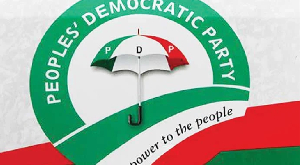The channels of monetary transactions are ever evolving. From barter to cash and now electronic, the journey seems unending!
E-banking – transactions performed using the internet or a mobile device – have become more common, making it easy to execute electronic payments, pay bills and transfer money between accounts.
This platform leverages technology to offer clients a more convenient banking experience. Customers can now change their monthly payment limits, view their vehicle finance accounts, activate their cards for international travel and trade shares on stock exchanges around the world.
Digitising transactions like this is a revolutionary step as it allows people to transfer money securely across distances that they cannot traverse on foot with cash in hand, says Patrick Quantson, Head of Digital Channels, Stanbic Bank.
While some people believe e-banking goes against traditional personalised banking, Quantson points to the increased efficiency and flexibility it presents.
First, some bank customers who previously did little or no budgeting are now able to monitor basic spending habits using spending trackers provided by online banks.
“In addition to providing a complete digital audit-trail of monetary transactions from end to end, it also speeds up the process,” he said. “Transactions, which used to take days, now take minutes, or even seconds.”
The commonest benefit E-banking offers is the opportunity to do banking from home at any hour. You can move money from current to savings accounts or make electronic payments 24/7, even when the bank is closed.
Electronic banking also creates a mobile bank for customers. Mobile applications allow customers to check balances and perform routine bank transactions from anywhere they can get phone reception.
E-banking offers also some cost-savings opportunities for customers. By paying bills online, customers reduce the number of cheques they have to write.
E-banking does not only benefit customers; it is convenient for banks as well. Investments in such technologies may allow existing customers to transact across multiple channels and present banks with stable transactional revenue.
“Banks can minimize labour and supply costs by allowing customers to self-service certain types of transactions,” the Stanbic Digital Channels boss said. “We also get to save money on paper and postage by sending statements over the Internet.”
Additionally, demonstrating to the under-banked and unbanked that banking can be done almost everywhere and at any time, will help banks penetrate these markets and mobilise more deposits.
Despite potential risks of identity theft and account hacking and less personal contact with the bank, e-banking, according to Quantson, remains the most convenient way of banking.
“Generally, in the future, any bank that does not enable its customers to easily conduct their business, including effecting transactions, across multiple technology-enabled channels, creates for itself a competitive disadvantage that would severely limit its growth, profits, and survival,” Quantson predicted.
Opinions of Monday, 26 October 2015
Columnist: Stanbic Bank













